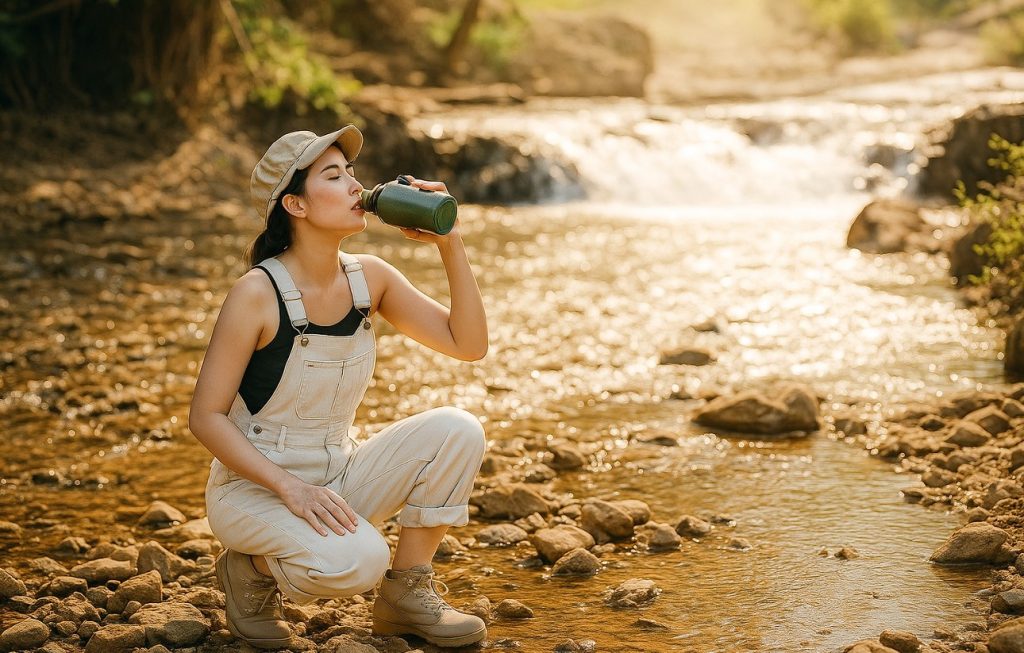Out in the wild, water is more than just a thirst-quencher—it’s your lifeline. Whether you’re hiking through sun-scorched canyons or trekking across dense forest, hydration keeps your mind sharp and your body functioning.
A lack of clean drinking water quickly leads to exhaustion, disorientation, and in extreme cases, life-threatening dehydration. Nature may be beautiful, but it’s also brimming with invisible dangers.
Untreated water can harbor pathogens like Giardia, Cryptosporidium, and E. coli. Just one careless sip from a contaminated stream can cause violent illness, compromising your ability to survive. Knowing how to find, evaluate, and purify water is as essential as fire, shelter or wilderness first aid.
Understanding Water Sources in the Wild — Which Are Safest?
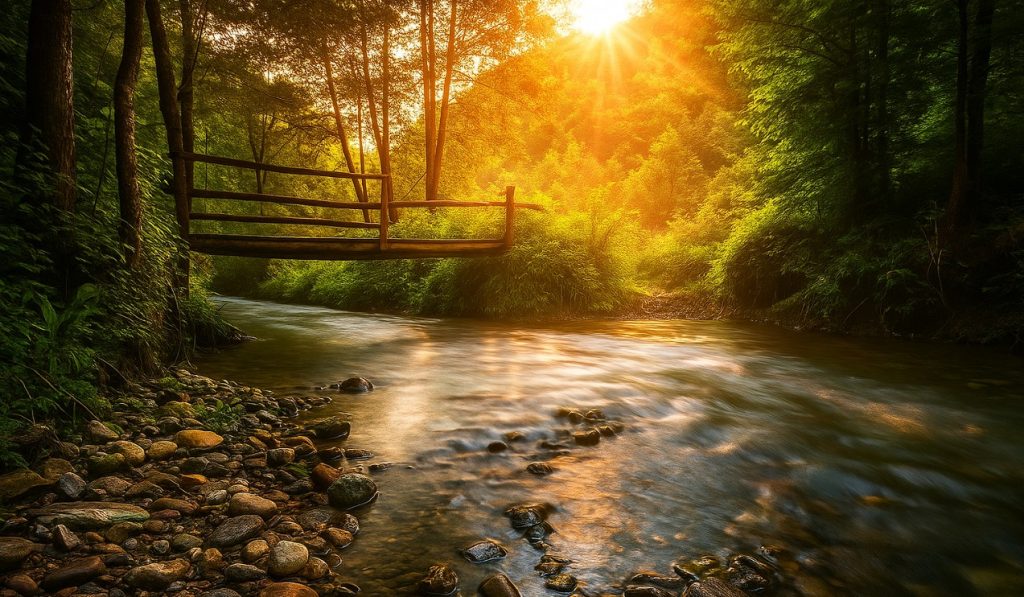
Flowing sources like mountain streams and fast-moving rivers are typically safer than still bodies like lakes or ponds. Springs bubbling from the ground are nature’s filtered gifts. Prioritize sources that are clear, cool, and moving—these are less likely to contain harmful microbes.
Rain is often the purest form of water available—free from minerals, pathogens, and pollutants. If you’re lucky enough to encounter a storm, set out tarps, bowls, or even leaves to collect it (see section below on “Water Collection Techniques” for more info). Just avoid collecting it from rock faces or tree bark, which can introduce contaminants.
Groundwater—accessed via wells or seepage—is usually filtered through layers of earth, reducing impurities. Surface water, on the other hand, is exposed to environmental contaminants and wildlife activity. When in doubt, purify both before drinking.
Still water is a microbial breeding ground. If you stumble upon a pool of water covered in scum, algae, or insect larvae—steer clear. It may look tempting in desperation, but the risk of illness is sky-high.
Reading the Landscape Like a Pro (And Like an Animal!)
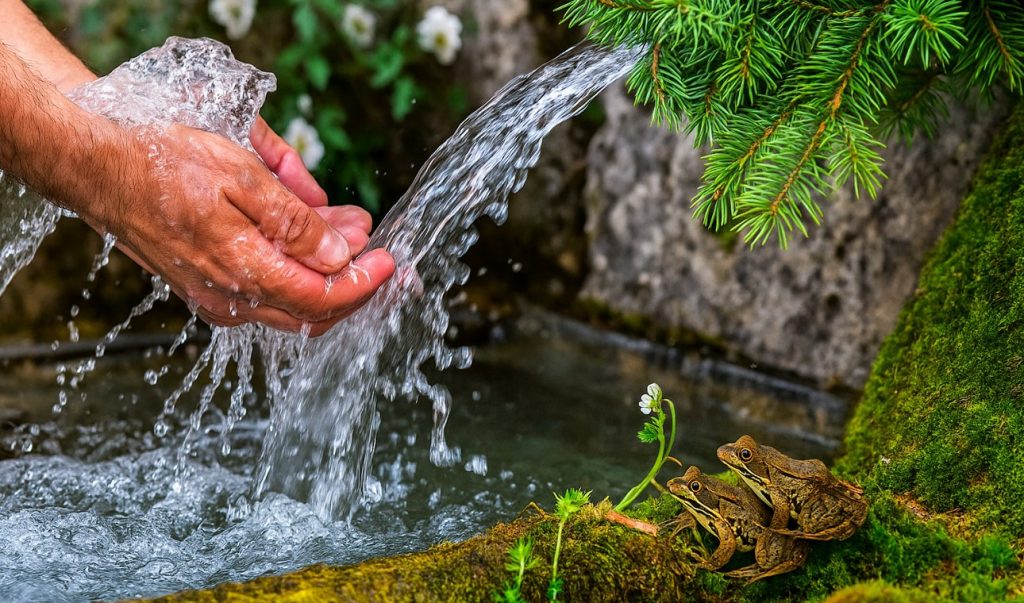
Wildlife have superior skills when it comes to safe-water detection. Look for converging game trails, bird activity, or hoof prints in soft earth. Bees, frogs, and dragonflies also tend to cluster near water. These natural signs often point toward hidden hydration sources.
Lush, green plants—especially willows, cattails, and cottonwoods—are strong indicators of nearby water. Mosses and ferns thrive in moist soil. If you’re in arid terrain, look for vegetation in valleys or crevices where water might collect or flow underground.
Water always seeks the lowest point. Scan the landscape for depressions, gullies, or dry stream beds. In mountainous areas, check below rock overhangs or inside narrow ravines—these can harbor hidden trickles that add up over time.
Water Collection Techniques
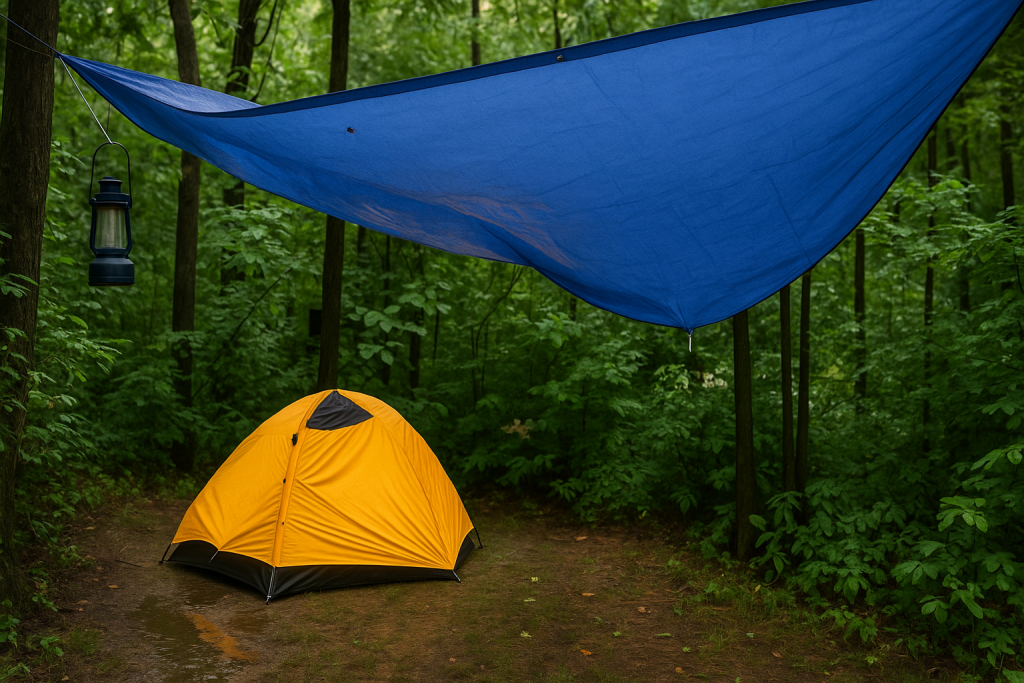
Stretch a tarp between trees or drape it over a backpack to create a catchment system. Use large leaves as funnels into bottles. Even a rain-soaked poncho can become a makeshift water catcher in a downpour!
A solar still is a brilliant low-tech solution. Dig a hole, place a container in the center, surround it with wet vegetation, and cover it with plastic. Anchor the edges and put a small rock in the center to create a drip point. Sunlight draws moisture into condensation, which drips into the container.
Also check out this DIY solar still tutorial that turned dirty Florida lagoon water into perfectly safe and delicious!
In dry creek beds or sandy washes, dig a hole a few feet deep—moist soil indicates you’re close. Line the hole with a cloth or container to absorb and collect water slowly over time.
Before sunrise, tie absorbent cloths to your ankles and walk through tall grass. Wring them into a container as they soak up dew. This method may be slow, but it can mean the difference between thirst and survival.
How to Identify Contaminated Water

Cloudy or murky water signals potential contamination. Bright green or blue hues can indicate toxic algae. Water that’s brown, sluggish, or contains foam or slicks should raise red flags.
A foul, sulfuric, or chemical odor is a warning sign. Metallic or bitter taste? Don’t drink it. While not all pathogens have a scent, water that smells off likely is.
Avoid water sources near animal carcasses or heavy wildlife activity. Brightly colored algae, especially blue-green, can produce neurotoxins. Skim the surface and scan the surroundings before collecting any water.
Making Water Safe to Drink
Boiling water for at least one minute (or three at higher elevations) kills almost all pathogens. If you’ve got a pot and fire, you’ve got a purifier. It’s simple, effective, and time-tested.
Modern backcountry filters remove bacteria, protozoa, and sediment. Pump filters are fast and effective. Gravity bags are great for groups and require less effort. Always check that your system meets EPA standards. Be sure to check our article for our 7 best backpacking water filters on Amazon.
We also really like this solar water purifier — brilliant!
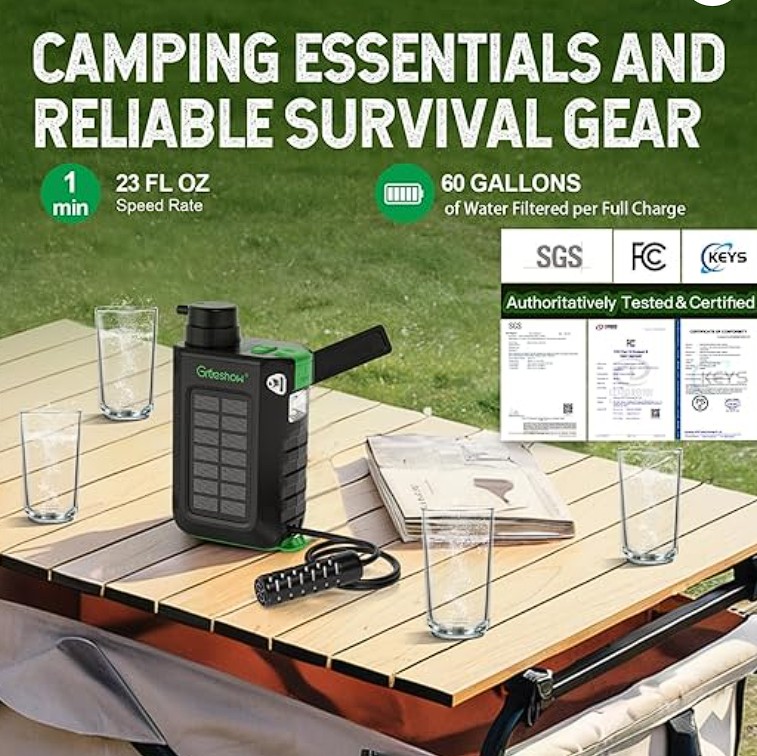
Solar Panel Charging, Hand Crank Charging, USB Charging, 0.01 Micron 5-Stage High-precision Filtration System.
UV light pens destroy microorganisms at the DNA level. They’re lightweight and work in seconds. Chemical options like iodine or chlorine dioxide tablets are also effective but may leave an aftertaste.
Layer charcoal, sand, and gravel inside a plastic bottle to create a crude but effective filter. While this doesn’t eliminate viruses, it reduces turbidity and larger pathogens—always follow with boiling or chemical treatment.
Emergency Tips for Water Scarcity
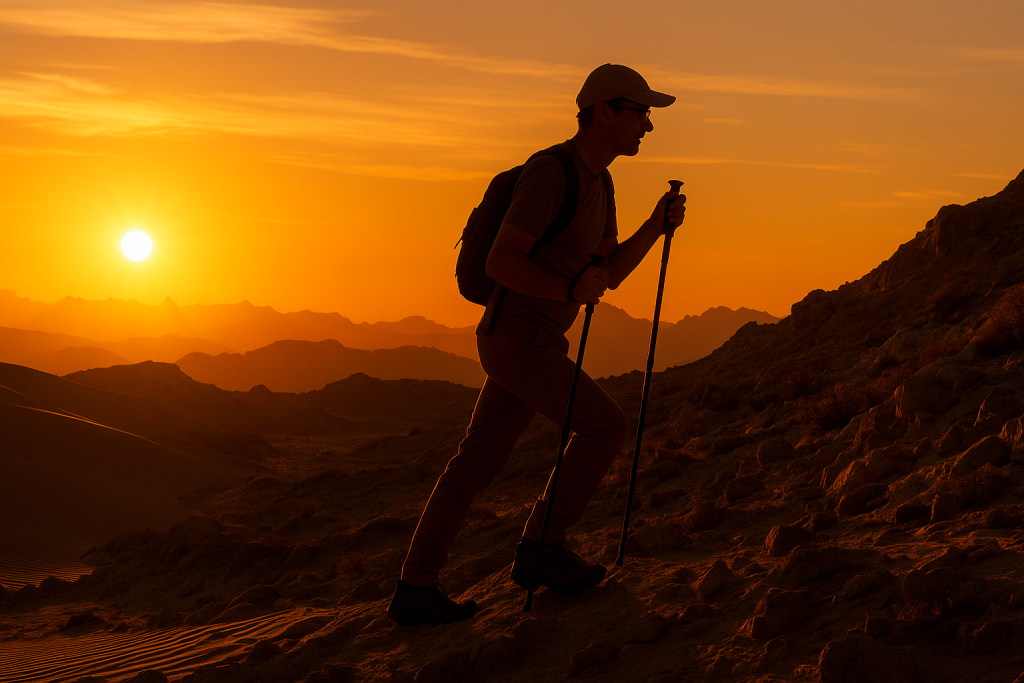
Stay calm and stop moving in the heat of the day. Shade yourself and conserve sweat. Use maps and the sun’s path to orient toward valleys or potential streams.
Apps like Gaia GPS, CalTopo, and AllTrails have water source indicators in addition to trail information. Drinking Water Map is another great app that is catered specifically to finding drinkable water.
Sip, don’t gulp. Avoid salty or sugary foods. Limit exertion and travel during cooler parts of the day. Every drop counts when your next source is unknown.
Early symptoms include dizziness, dry mouth, and fatigue. Severe signs include confusion, sunken eyes, and dark urine. Rehydrate gradually, and if electrolytes are available, use them to rebalance your system.
Bonus Knowledge for Wilderness Warriors
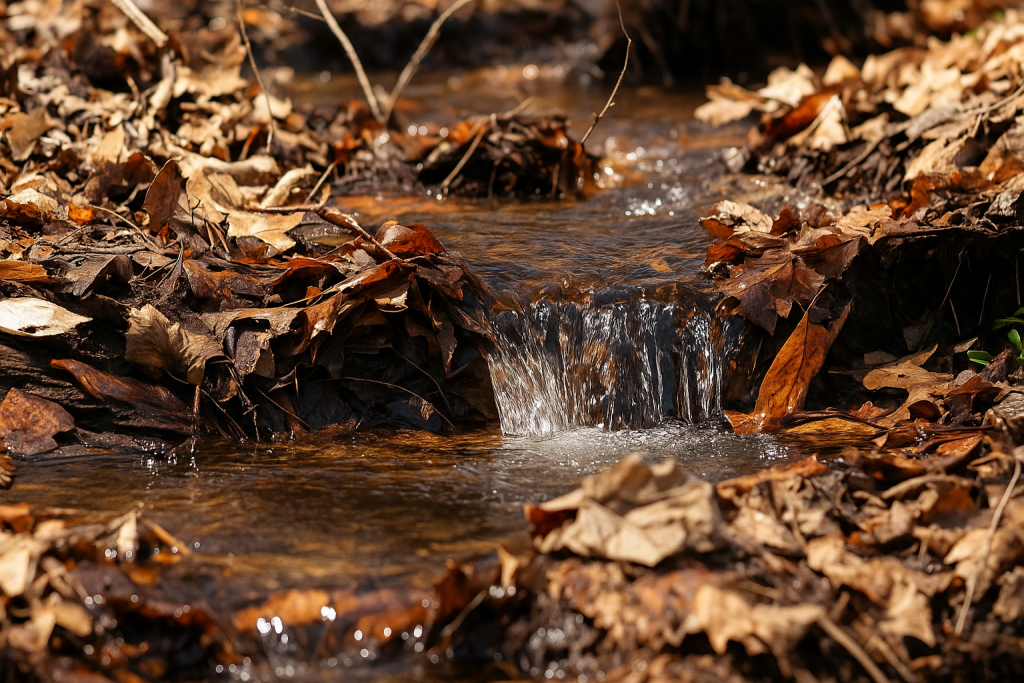
Birds flying low at dawn often head to water. Bees rarely forage more than a few miles from a water source. But beware—predators also gather near water holes. Observe quietly and assess before approaching.
Springtime snowmelt creates gushing streams, while summer may dry them up. Autumn brings rains; winter freezes everything. Your water plan must change with the seasons.
In national parks and conservation lands, respect water regulations. Never contaminate sources or disrupt natural habitats. Follow “Leave No Trace” principles to protect wild places for others.
In the wild, the ability to locate and purify water is non-negotiable. It’s the thread that keeps every other survival skill intact. Stay alert, stay informed, and stay hydrated.
Just like mastering camping shelters, 2ater-finding isn’t just a survival tactic—it’s a skill that builds self-reliance. With practice, you’ll move through nature not just as a visitor, but as someone who truly belongs.
Check out our companion video for even more tips, tricks and hacks for finding a safe water source and backing it up with water purification techniques.
See Our Latest Posts
- 21 Fun Camping Games to Entertain Yourself Outdoors
- How to Set Up a Hammock for Camping
- Compact Camping Gear That Saves Space in Your RV or Van
- Top 15 Most Beautiful Waterfalls In The World To Visit In Your Lifetime
- Top 12 Camping Gadgets and Accessories You Didn’t Know You Needed (2025)
Write A Guest Post For Us!
Are you passionate about camping and the great outdoors?
We’re excited to announce that we’re accepting guest posts
in the camping and outdoor niche!

